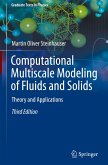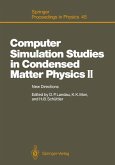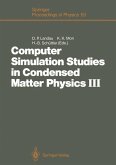Devastatingly simple, yet hugely effective, the concept of this timely text is to provide a comprehensive overview of computational physics methods and techniques used for materials modeling on different length and time scales. Each chapter first provides an overview of the physical basic principles which are the basis for the numerical and mathematical modeling on the respective length scale. The book includes the micro scale, the meso-scale and the macro scale.
The idea of the book is to provide a comprehensive overview of computational physics methods and techniques, that are used for materials modeling on different length and time scales. Each chapter first provides an overview of the physical basic principles which are the basis for the numerical and mathematical modeling on the respective length-scale.
The book includes the micro-scale, the meso-scale and the macro-scale. The chapters follow this classification. The book will explain in detail many tricks of the trade of some of the most important methods and techniques that are used to simulate materials on the perspective levels of spatial and temporal resolution. Case studies are occasionally included to further illustrate some methods or theoretical considerations. Example applications for all techniques are provided, some of which are from the author's own contributions to some of the research areas. Methods are explained, if possible, on the basis of the original publications but also references to standard text books established in the various fields are mentioned.
The idea of the book is to provide a comprehensive overview of computational physics methods and techniques, that are used for materials modeling on different length and time scales. Each chapter first provides an overview of the physical basic principles which are the basis for the numerical and mathematical modeling on the respective length-scale.
The book includes the micro-scale, the meso-scale and the macro-scale. The chapters follow this classification. The book will explain in detail many tricks of the trade of some of the most important methods and techniques that are used to simulate materials on the perspective levels of spatial and temporal resolution. Case studies are occasionally included to further illustrate some methods or theoretical considerations. Example applications for all techniques are provided, some of which are from the author's own contributions to some of the research areas. Methods are explained, if possible, on the basis of the original publications but also references to standard text books established in the various fields are mentioned.
From the reviews: "This is an advanced mathematical treatise devoted to an overview of numerical computational methods and techniques for materials modeling on different length and time scales. Steinhauser ... covers microscale, mesoscale, and macroscale of materials modeling in two parts and seven chapters. ... The book includes several appendixes, with one that provides further reading and another that lists almost 500 references. ... Summing Up: Recommended. Graduate students and researchers/faculty in mathematics and physics." (R. Darby, CHOICE, Vol. 45 (10), June, 2008)








